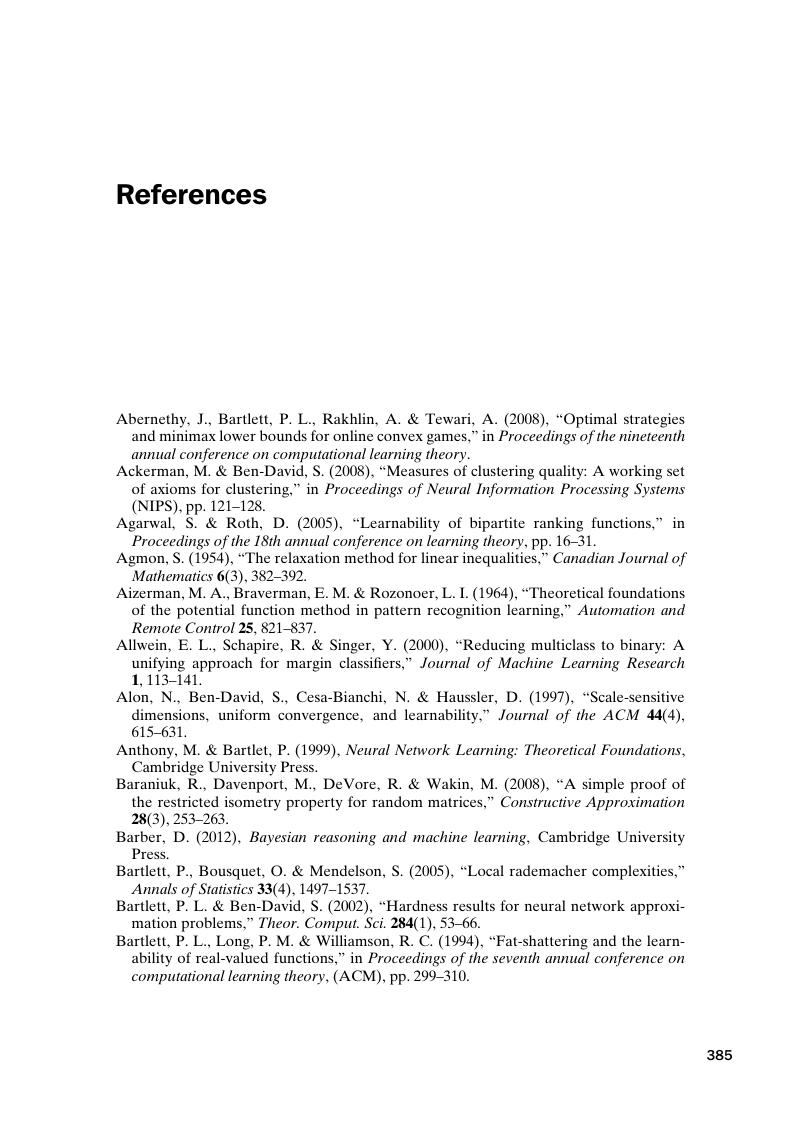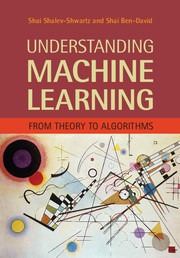References
Published online by Cambridge University Press: 05 July 2014
Summary

Information
- Type
- Chapter
- Information
- Understanding Machine LearningFrom Theory to Algorithms, pp. 385 - 394Publisher: Cambridge University PressPrint publication year: 2014
References
Accessibility standard: Unknown
Why this information is here
This section outlines the accessibility features of this content - including support for screen readers, full keyboard navigation and high-contrast display options. This may not be relevant for you.Accessibility Information
- 1
- Cited by
